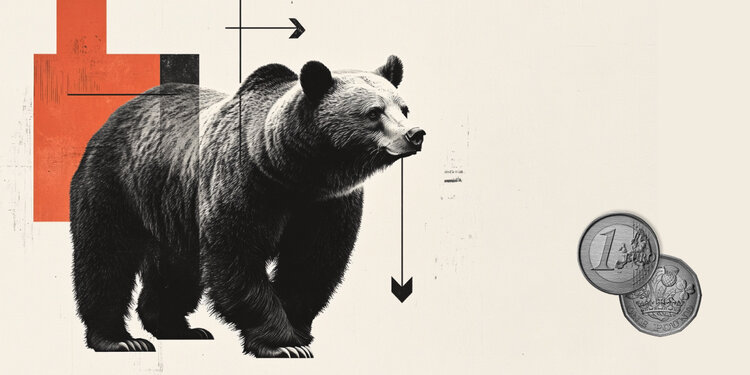- EUR/GBP slumps to near 0.8435 in Monday’s early European session.
- BoE sticks to a cautious path, supporting the GBP.
- Traders raise their bets on ECB rate reductions this year.
The EUR/GBP cross extends the decline to around 0.8435 during the early European session on Monday. The Pound Sterling (GBP) strengthens against the Euro (EUR) due to positive developments surrounding the United States (US) and the United Kingdom (UK) trade agreement last week. Trader will focus on the speeches of the Bank of England (BoE) policymakers, including Megan Greene, Catherine Mann and Alan Taylor.
US President Donald Trump last week said that he will continue to impose a new 10% tariff on imports of most British goods but will reduce higher tariffs on imports of British cars, steel and aluminium. These positive developments surrounding the US-UK trade deal lift the GBP and act as a headwind for the cross.
A gradual and careful policy-easing approach by the BOE contributes to the GBP’s upside. The UK central bank cut interest rates by a quarter percentage point in a divided decision last week and suggested that the growth risks posed by Trump’s global trade war haven’t derailed its plan to ease policy only cautiously. The BoE estimated the UK economy to grow at a faster pace of 1%, up from 0.75% projected in the February meeting.
On the Euro’s front, growing expectations of further interest rate cuts by the European Central Bank (ECB) weigh on the shared currency. Furthermore, ECB Governing Council member Olli Rehn said on Friday that the central bank should cut its interest rate next month if its new forecasts confirm an outlook of disinflation and waning growth momentum.
Pound Sterling FAQs
The Pound Sterling (GBP) is the oldest currency in the world (886 AD) and the official currency of the United Kingdom. It is the fourth most traded unit for foreign exchange (FX) in the world, accounting for 12% of all transactions, averaging $630 billion a day, according to 2022 data.
Its key trading pairs are GBP/USD, also known as ‘Cable’, which accounts for 11% of FX, GBP/JPY, or the ‘Dragon’ as it is known by traders (3%), and EUR/GBP (2%). The Pound Sterling is issued by the Bank of England (BoE).
The single most important factor influencing the value of the Pound Sterling is monetary policy decided by the Bank of England. The BoE bases its decisions on whether it has achieved its primary goal of “price stability” – a steady inflation rate of around 2%. Its primary tool for achieving this is the adjustment of interest rates.
When inflation is too high, the BoE will try to rein it in by raising interest rates, making it more expensive for people and businesses to access credit. This is generally positive for GBP, as higher interest rates make the UK a more attractive place for global investors to park their money.
When inflation falls too low it is a sign economic growth is slowing. In this scenario, the BoE will consider lowering interest rates to cheapen credit so businesses will borrow more to invest in growth-generating projects.
Data releases gauge the health of the economy and can impact the value of the Pound Sterling. Indicators such as GDP, Manufacturing and Services PMIs, and employment can all influence the direction of the GBP.
A strong economy is good for Sterling. Not only does it attract more foreign investment but it may encourage the BoE to put up interest rates, which will directly strengthen GBP. Otherwise, if economic data is weak, the Pound Sterling is likely to fall.
Another significant data release for the Pound Sterling is the Trade Balance. This indicator measures the difference between what a country earns from its exports and what it spends on imports over a given period.
If a country produces highly sought-after exports, its currency will benefit purely from the extra demand created from foreign buyers seeking to purchase these goods. Therefore, a positive net Trade Balance strengthens a currency and vice versa for a negative balance.

